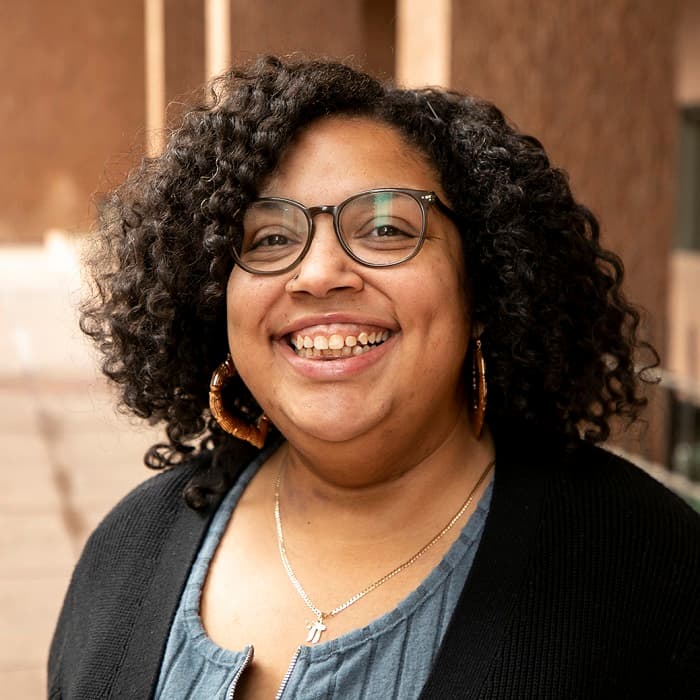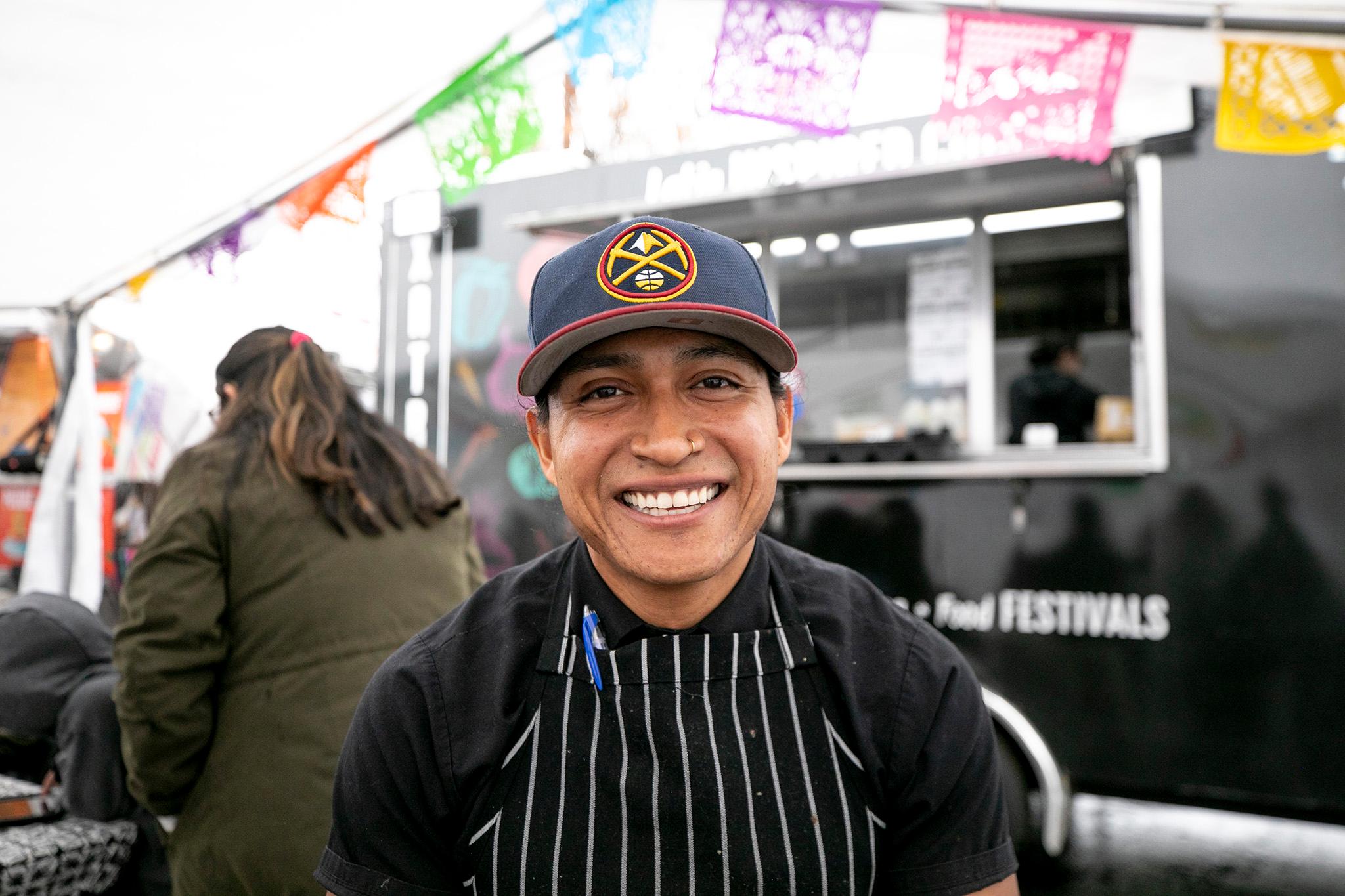To my knowledge, it doesn’t snow in Oaxaca, Mexico. It does, however, snow in Denver in late April.
But the dreary cold and slush didn’t stop Denverites from experiencing the smoky flavors of Oaxacan mezcal, the crispiness of chapulines or the colors of Oaxaca-inspired textiles in Westwood.

This weekend, three Westwood community staples hosted “Oaxaca en Denver,” a food and art festival bringing the cultural experience of one of Mexico’s most diverse states to the city.
“For me, representing Oaxacan culture is about connecting with people and creating community,” said Rubén Hernández, one of the event coordinators, in Spanish. “We are presenting Oaxacan culture and gastronomy…It is a pride to represent everything that is Oaxacan culture. I’m super happy and thankful for everyone who joined us and those who [didn't], don’t worry there are still more events to come.”
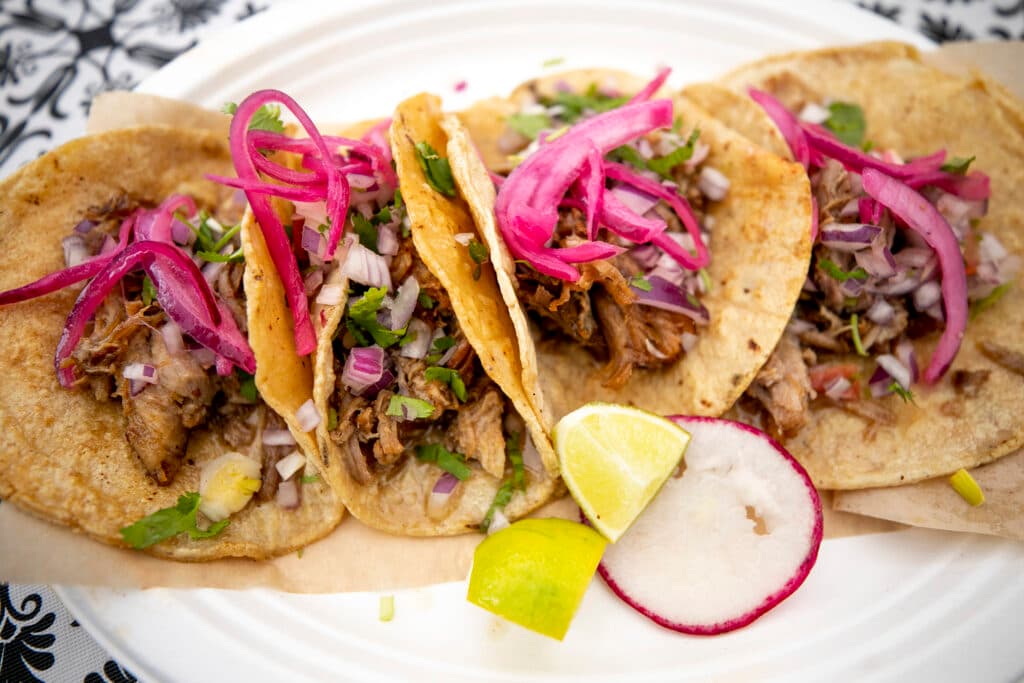
Tacos served up by La Reyna Del Sur at the Oaxaca en Denver festival at Re:Vision's Westwood campus. April 27, 2024. Kevin J. Beaty/Denverite
Rubén Hernández stands in the barbacoa pit where he'll soon be cooking on Re:Vision's campus in Westwood. April 24, 2024. Kevin J. Beaty/Denverite

Hernández is a Oaxacan-native and the owner of La Reyna del Sur, where he cooks up traditional Oaxacan dishes. He, along with Ana Marina Sanchez, owner of Ana Marina Studios and the nonprofit Re:Vision, put together the event with the goal of bringing Oaxaca to Denver.
And they did.
Barefooted dancers performed the “Flor de Piña,” or Flower of the Pineapple, which pays homage to the pineapples that grow in the region. Being barefoot connects the dancers to the earth and they dance in geometric shapes similar to the shapes on pineapples. The fruit adorns their shoulders and they present the fruit as an offering throughout the dance.
Hernández is from an Indigenous village in Oaxaca and speaks Mixteco, an Indigenous language. He gave participants a Mixteco lesson, teaching them numbers and simple words.
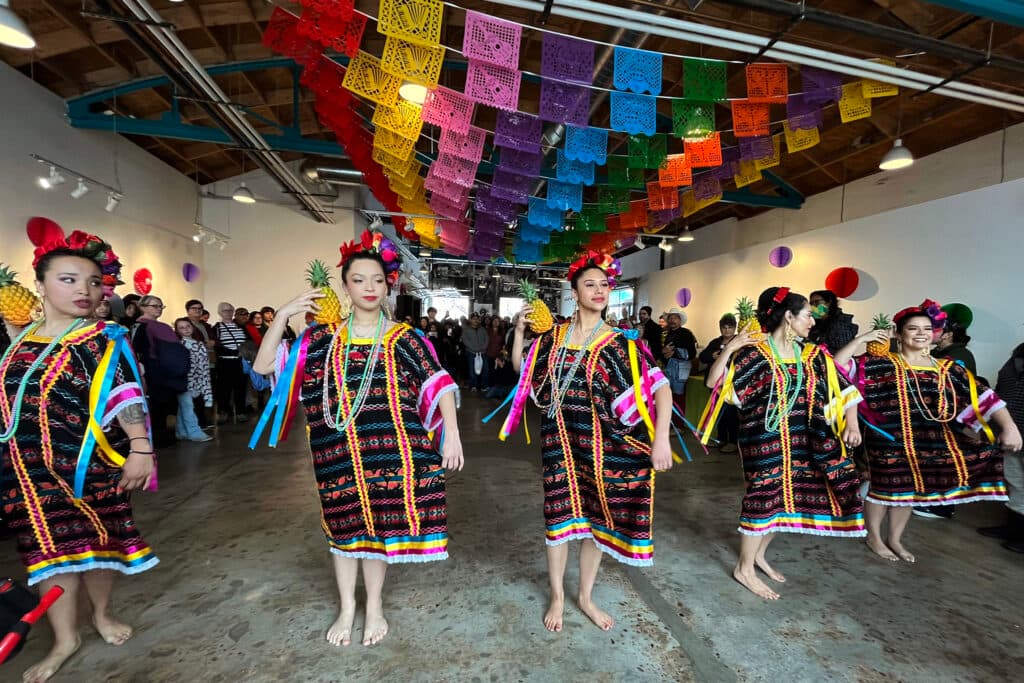
The Oaxaca en Denver festival at Re:Vision's Westwood campus. April 27, 2024. Desiree Mathurin/Denverite
Rubén Hernández (left to right), Ana Marina Sanchez and Mariana del Hierro run a MIxteco language class during the Oaxaca en Denver festival at Re:Vision's Westwood campus. April 27, 2024. Kevin J. Beaty/Denverite
Then, there was the food. La Reyna served up tlayudas and cemitas, both native dishes of Oaxaca. Tlayudas are similar to tostadas in that a large, thin and fried tortilla is topped with beans, Oaxaca cheese and a protein. They also can come with a side of chapulines, or grasshoppers. Cemitas are sandwiches similar to tortas.
Celena "Lady Los" Miller was chowing down on the crunchy critters along with mole verde y pollo
She said she recently visited Oaxaca in November and it was hard for her to come back.
“There’s so much deep history and the [Indigenous] people are still there. The Zapotec people, they still speak Zapotecan,” Miller said. “I felt like Oaxaca was a pillar in Mexico as far as arts and culture…Stuff has been handed down for generations upon generations and you feel that.”

Miller said when she learned about Oaxaca en Denver, she knew she wanted to come and experience the culture again. She added that events like these are a great way to “break the ice” for people who want to learn about different places.
This applies to both people from Mexico or who have Mexican roots, and people who have no connections to Mexico at all. Miller said she’s on a journey to learn about her own Mexican roots and is discovering that Mexico is not a monolith.

“This is a great way to showcase the culture…This makes it inviting. Come and eat the food. Come and try the drinks. Come and try the different desserts and different things,” Miller said.
When people are able to share their culture and learn from each other, but allows them to connect better, continued Miller.
“It's great for people to understand that Mexico isn't just this one big ball, right? It’s so many different things," she said. "Just like you go state to state [in America]. There's different traditions or customs or things that people do or eat in those states. It's just like that down there.”
Introducing people to new things through food

Mariana del Hierro, executive director of Re:Vision, said sentiments like Miller’s are why the nonprofit helps put on cultural events including their ancestral food series, which focuses on introducing traditional indigenous cuisines to the neighborhood and Denverites.
“I think a lot of perceptions in the U.S. is that Mexican immigrants are just this one identity,” del Hierro said. “Here with our events, we have the unique opportunity to show just the complexities of the culture and the culinary traditions and just the people period… It is like a sampling of just the diversity and the beauty that is Mexico.”
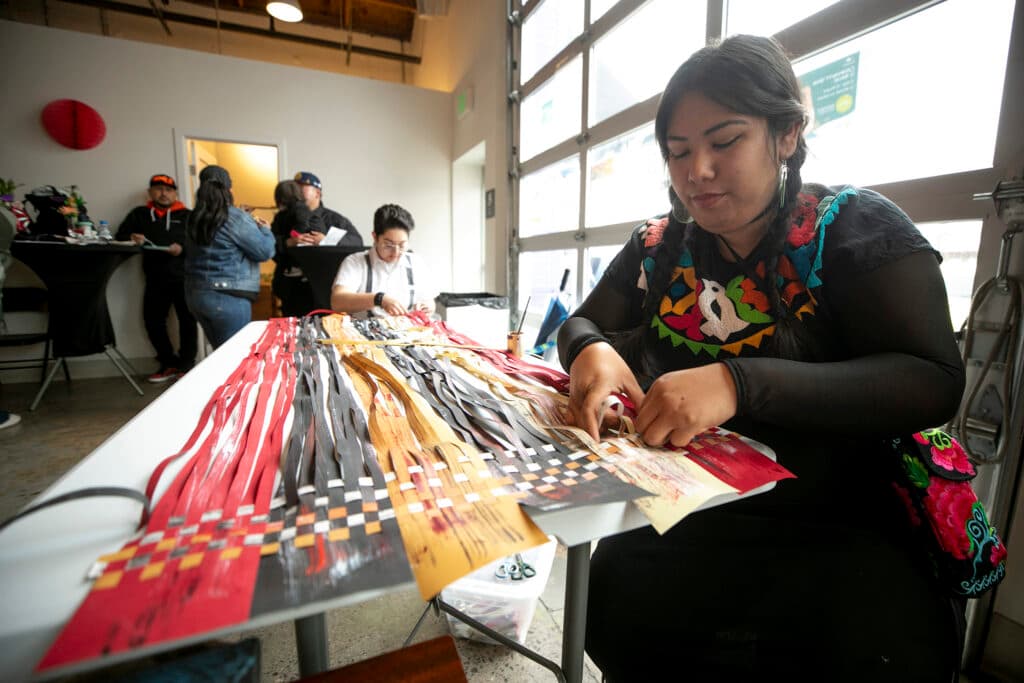
Dahlia Lopez and Kareena Romero weave paper during the Oaxaca en Denver festival at Re:Vision's Westwood campus. April 27, 2024. Kevin J. Beaty/Denverite
Dahlia Lopez weaves paper during the Oaxaca en Denver festival at Re:Vision's Westwood campus. April 27, 2024. Kevin J. Beaty/Denverite
